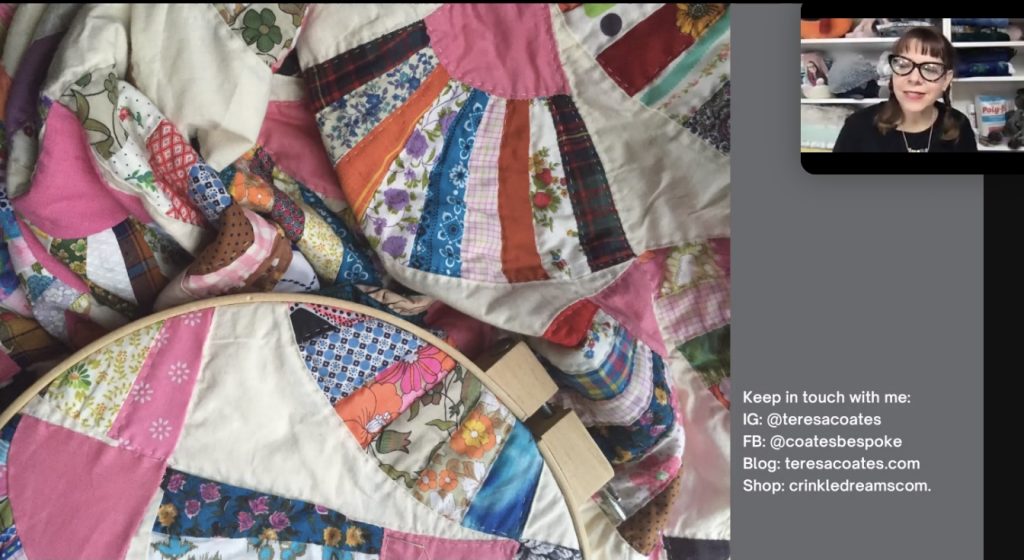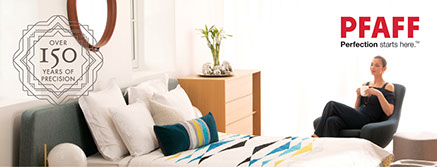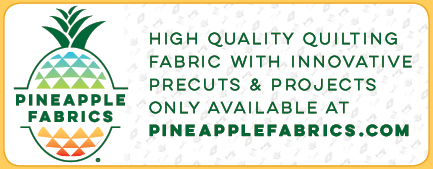Looking for new ways to change up your quilting style? This Lecture at Road@Home presented by Teresa Coates had lots of ideas to add quirk to your quilts.
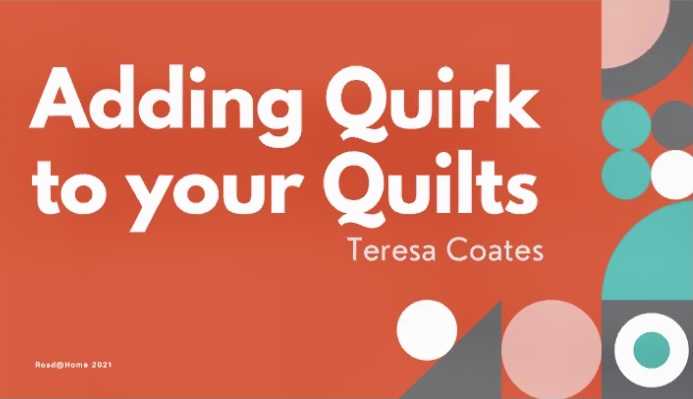
Who is Teresa Coates?
Teresa Coates has a penchant for sewing, quilting, teaching, and adventure. She has worked at Fabric Depot, The Fabric Shop Network, Robert Kaufman Fabrics, and American Quilt Retailer magazine. Currently, she lives in Los Angeles where she works for Shannon Fabrics as their as National Educator, teaching at educational events nationwide and producing video tutorials, in addition to managing educational and material support for small quilt shops and fabrics stores.
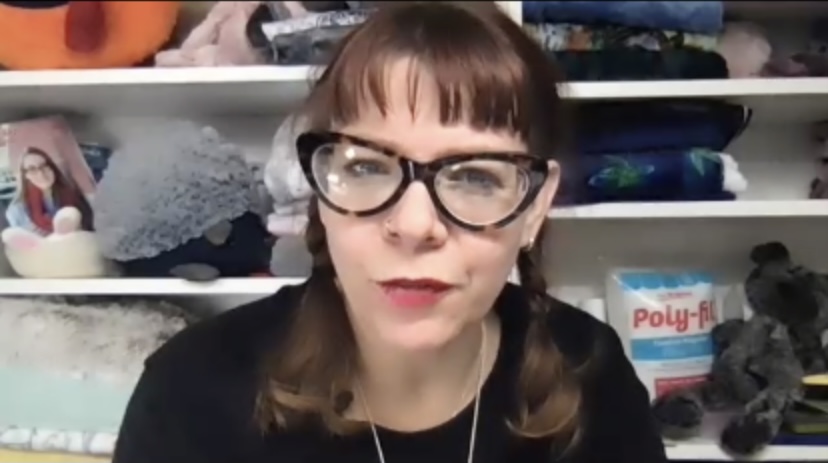
Teresa is also a writer and quilt pattern designer. She has been quilting sine the early 90’s. Her quilts, sewing projects and writing have appeared in numerous magazines. Teresa has also presented at local and national conventions, including Road to California.
Be Brave
Teresa noted that when we start our quilting journey, we are often afraid to break the rules. She argues that it is actually “freeing” to try new ideas with your quilt fabrics. “There is no quilting police.”
To add quirk to your quilts, Teresa believes that there is “always more and more you can learn and do.” All it takes is to look at fabrics in a different way and play with various techniques.
Teresa says it takes lots of PRACTICE to add quirk to your quilts. Never be afraid of FAILURE – it’s part of the learning process. And above all, BE BRAVE.
Tips to Add Quirk to Your Quilts
Some of the ideas Teresa shared to add quirks to your quilts included:
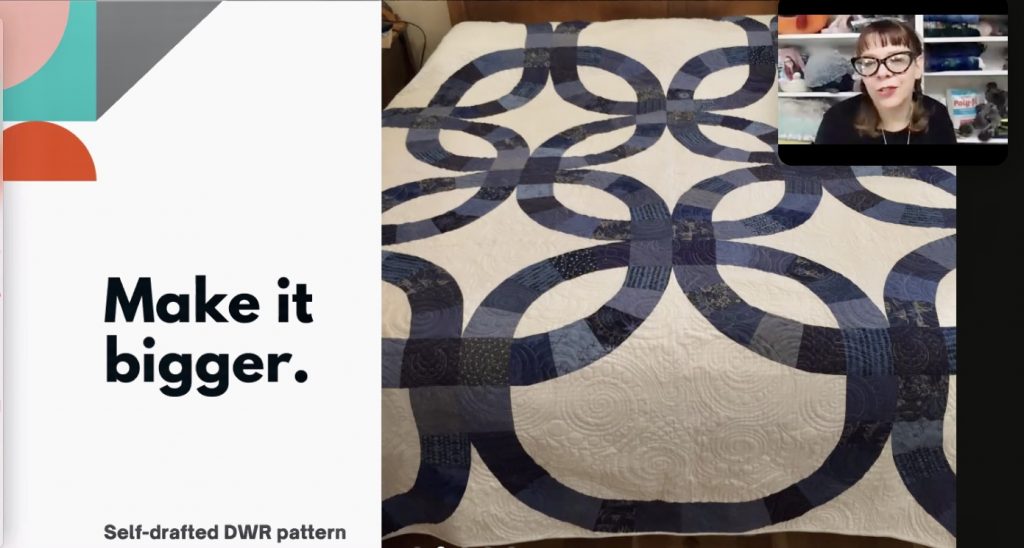
Try using charm packs (which are 5″squares) to make oversized quilt blocks
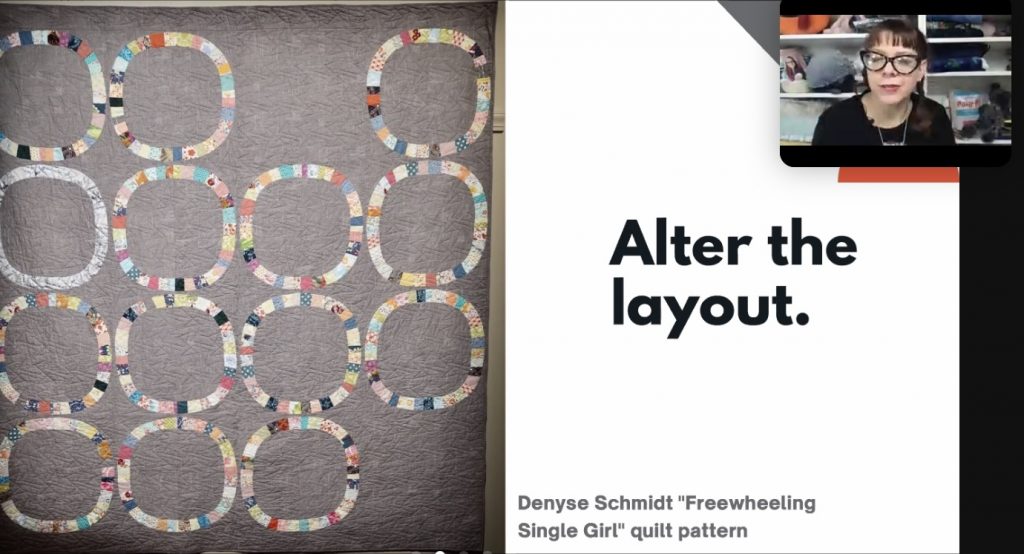
Single out a square or leave out squares randomly.
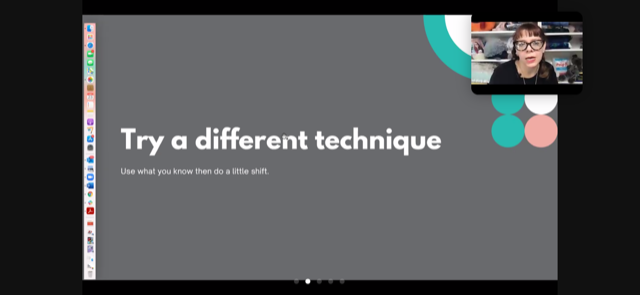
If a pattern calls for piecing, do applique instead.
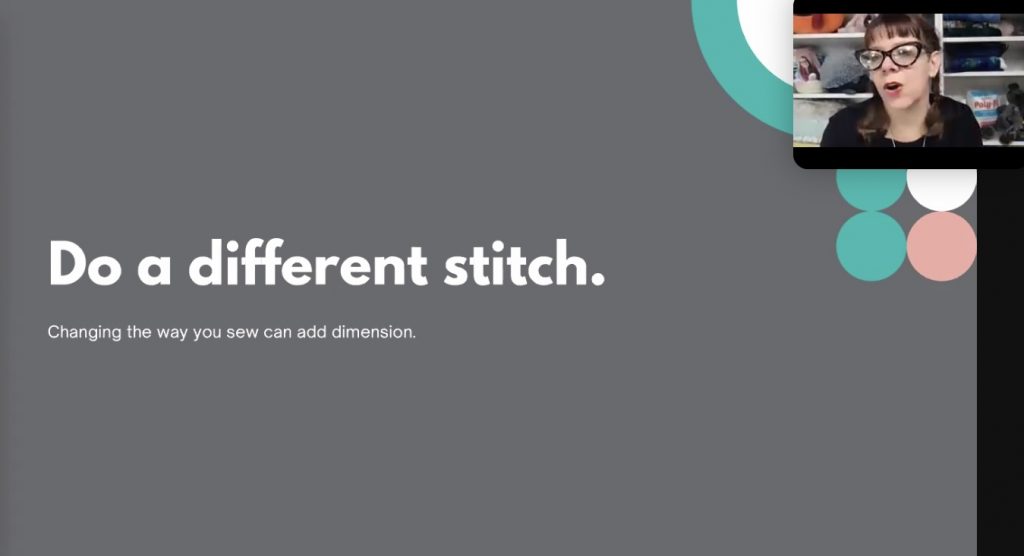
Combine different stitch styles. Machine quilt on plain fabrics. Hand quilt on color fabrics.
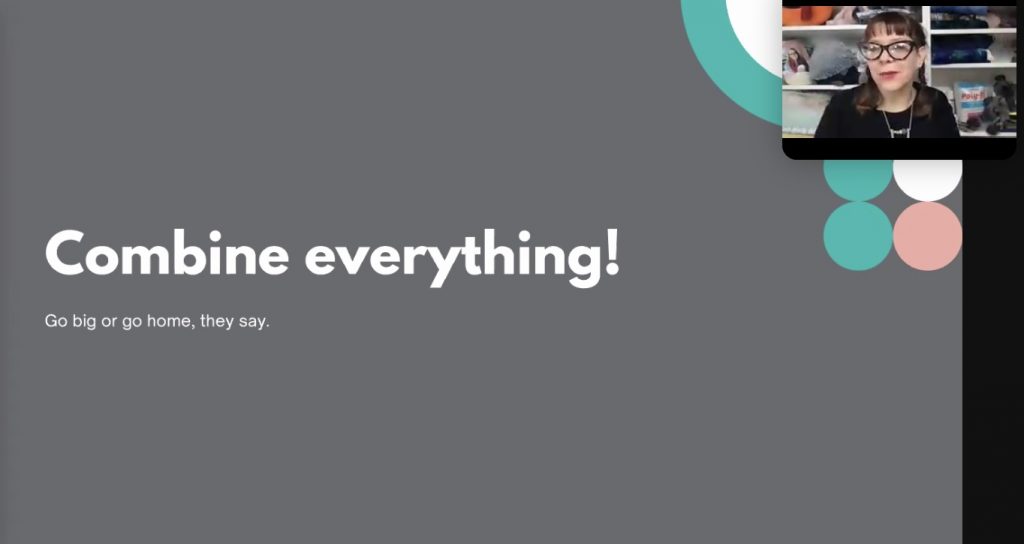
Explore everything in one quilt: paint, fabric, feathers, stitches — you name it. Anything goes.
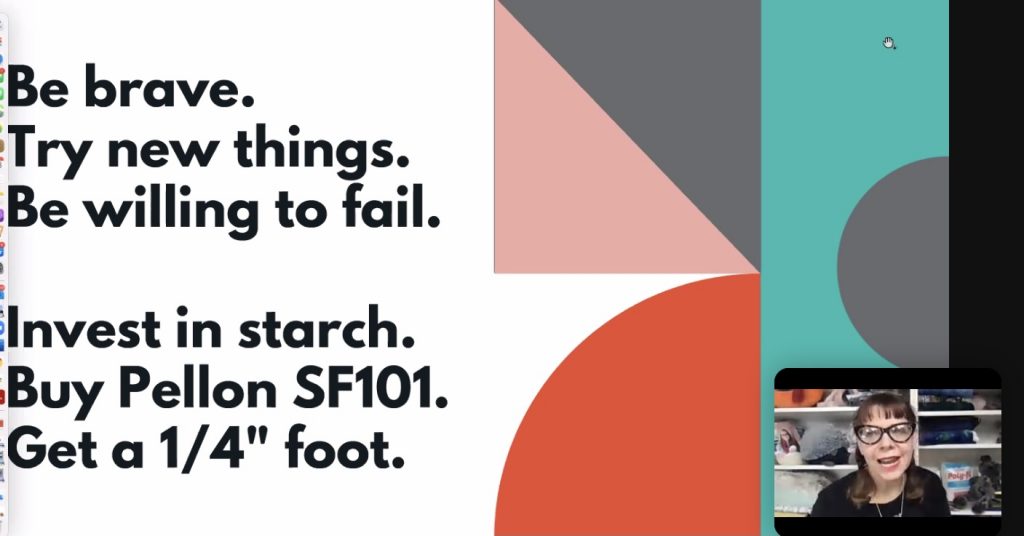
When you add quirk to quilts, Teresa recommends three things to always have on hand:
- Lots of starch to add body to whatever fabrics you are combining and experimenting with. Teresa’s favorite is Stay Flow. She recommends diluting it to different levels for different fabric types.
- Pellon SF101 is an all purpose, woven, fusible interfacing that provides crisp support. It’s intended to be used for light to medium woven and knit fabrics but Teresa uses it to stabilize everything.
- Using a 1/4″ foot keeps your work consistent.
Teresa Coates was enthusiastic, inspiring her class to use fabric in a different and creative way.
